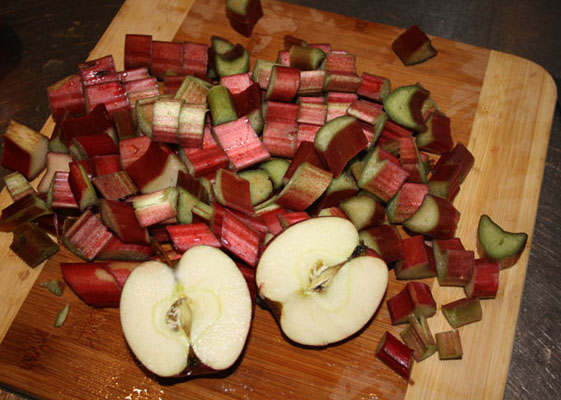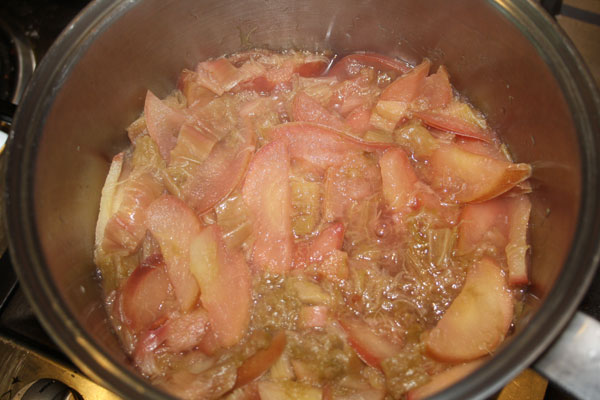Rhubarb rhubarb rhubarb!
Until recently I thought all rhubarb was crimson red. I once grew some rhubarb with green stems but I was too nervous to eat it. I thought it was unripe and maybe even toxic, so I bought some from the shop instead.
I know better now. It turns out rhubarb can grow crimson red, or pink, or green. I could have eaten it after all and I bet it would have been delicious.
Since then I have found out more about rhubarb. It’s a cool season herbaceous perennial and the best stem colour is produced at 10°C. The red colouration is in response to cold so it can be difficult to grow really red-stemmed rhubarb in a warm area. It also doesn’t like a lot of heat and humidity so is hard to grow in coastal areas north of Brisbane. In saying that, given well-drained soil and partial shade it can do quite well in sub-tropical areas.
Rhubarb is not just great eating but it’s good for you too. It is rich in iron, and vitamins A and C but only the rhubarb stalks should be eaten and they must be cooked. Rhubarb leaves contain poisonous substances including oxalic acid, which also means you shouldn’t feed it to livestock or poultry.
Rhubarb can be grown from crowns or seed. There is growing information here.
If you don’t have much space you can successfully grow rhubarb in containers, so long as they are large enough to accommodate a season’s growth.
The most satisfying part of growing you own veges is the harvesting. You can harvest by pulling the thickest, healthiest stalks off gently – don’t cut them. Leave a stub and don’t take more than half the stalks of any one plant. This way you are assured of healthy plants and a continuing supply of stalks over the growing season.
And then, of course, it’s all in the eating. Even though it is a vegetable it is used as a ‘fruit’, and can be baked in pies and crumbles, it combines well with apples and ginger. There are so many ways of cooking rhubarb but at our place we simply slice the rhubarb into a saucepan along with apple and throw in a dessertspoon of sultanas. Add a couple of tablespoons of water and cover with a lid and cook until fruit is soft. Serve hot or cold with a dollop of organic cream and or yoghurt. Easy.
Tags: fruit, health, livestock, recipe, vegetables
Posted in Kitchen, Organic Gardening







My rhubarb was both green and red so I decided to eat the green as well and all was fine but now (winter in Melbourne) all stalks have rotted away and left only the crown. Will they grow a crop again??
Rhubarb is a herbaceous perennial, which means that it is a non-woody plant that grows for more than two years. Rhubarb will die back during winter and sprout again from the rootstock in spring. The stems and leaves or ‘aerial’ part of the plant are annual and the roots persistent. So, as long as the crown is in good health, your plant should throw up new shoots in spring. All going well, your rhubarb plant can keep providing delicious stalks for twenty years – that’s a lot of crumbles! http://greenharvest.com.au/Plants/Information/Rhubarb.html